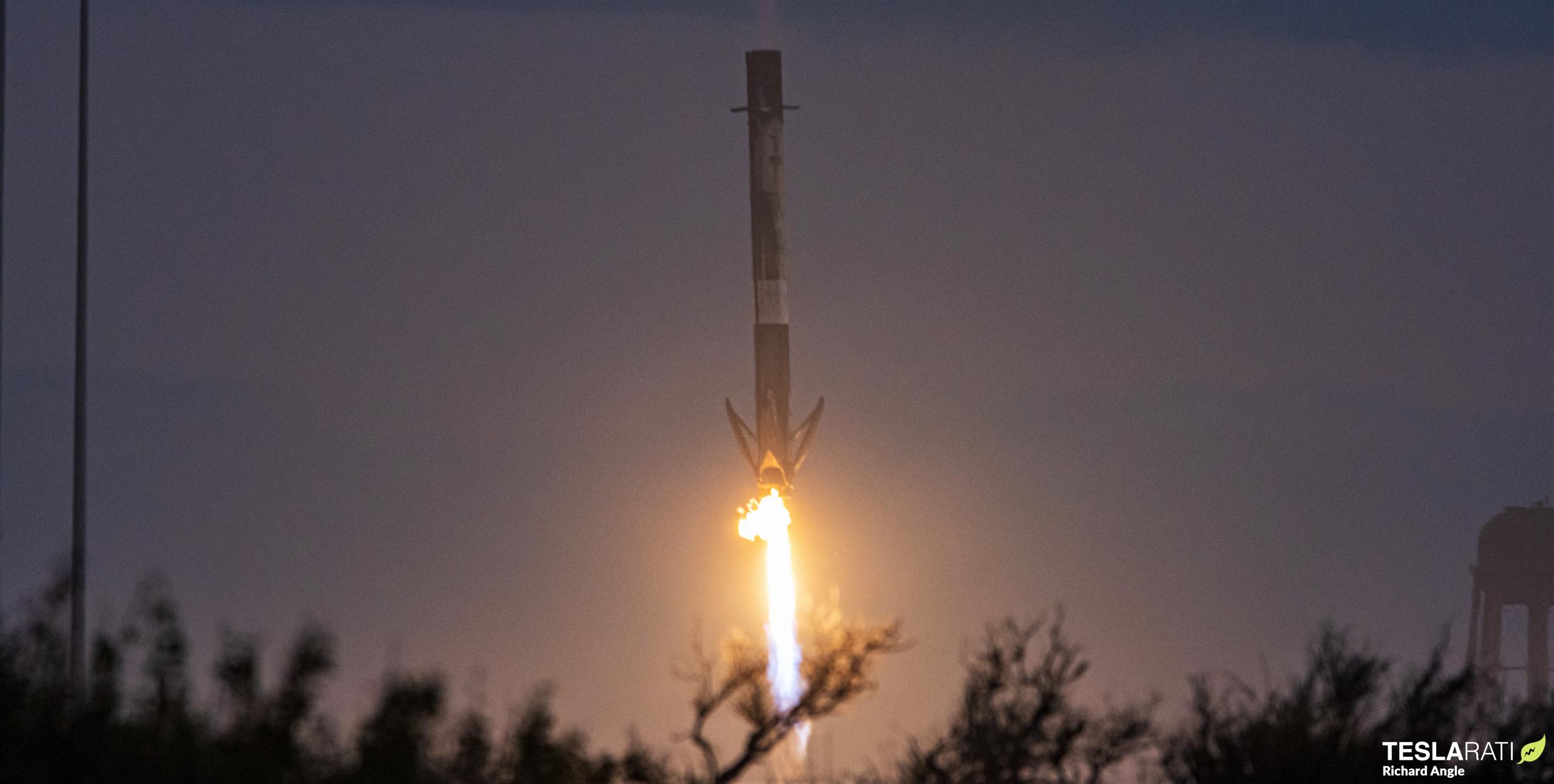

News
SpaceX sends OneWeb satellites to orbit on 55th launch of 2022
SpaceX has successfully launched the first of at least three missions for Starlink competitor OneWeb, completing its 55th launch of the year in the process.
Hopefully ending a strange series of delays that began last month, Falcon 9 lifted off from SpaceX’s NASA Kennedy Space Center LC-39A pad several days behind schedule on December 8th, 2022. The rocket performed perfectly, ascending for about nine minutes to reach a parking orbit around 400 kilometers (~300 mi) above Earth’s surface. B1069, Falcon 9’s flight-proven booster, shut down, separated from the upper stage, flipped around with cold-gas thrusters, and began boosting back to the Florida coast two and a half minutes after liftoff.
Thanks to the launch’s timing, which happened moments after sunset, B1069 first experienced sunset on the ground, ascended back into the light after liftoff, and finally experienced a second sunset while racing back to Earth – all beautifully captured by SpaceX tracking cameras. Eight minutes after liftoff, the Falcon 9 booster touched down on SpaceX’s LZ-1 landing pad, completing its fourth orbital-class launch in 12 months. Around the same time, Falcon 9’s upper stage reached orbit.
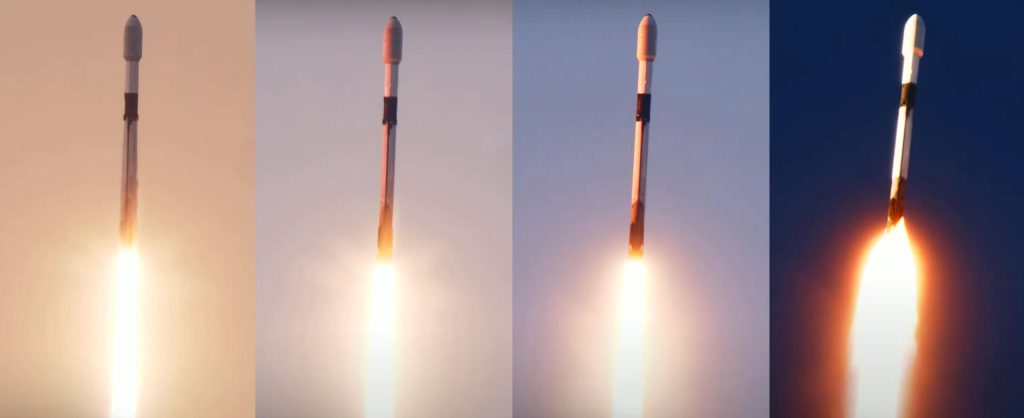
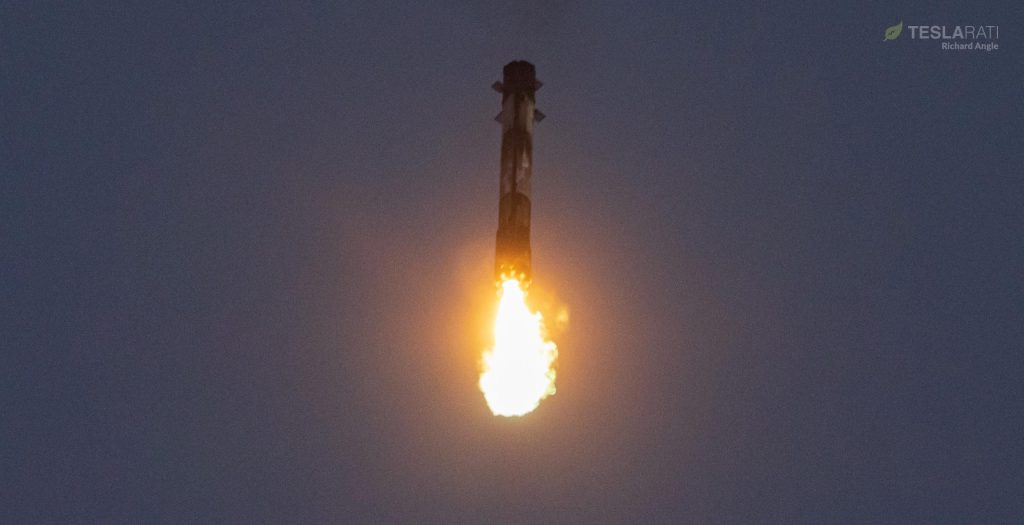
The update that's rolling out to the fleet makes full use of the front and rear steering travel to minimize turning circle. In this case a reduction of 1.6 feet just over the air— Wes (@wmorrill3) April 16, 2024
An hour after liftoff, the upper stage ignited a second time to circularize its parking orbit. Its payload – a record 40 OneWeb satellites weighing roughly 6.5 metric tons (~14,300 lb) – was then deployed in two sets of 13 and one set of 14 over the next half hour, after which the upper stage likely performed a deorbit burn to ensure it doesn’t become space debris.
For its own Starlink internet constellation, SpaceX routinely launches 54+ satellites – weighing almost 17 tons (~37,000 lb) – at once, demonstrating the kind of efficiency that can be achieved when a satellite is explicitly designed to use as much of Falcon 9’s performance as possible. To some extent, OneWeb did something similar, but for a different rocket. OneWeb’s far more traditional 150-kilogram (~330 lb) satellites were loosely designed to launch on Russia’s Soyuz 2.1 after the company purchased up to 21 of the rockets for $1-1.5 billion in 2015.
But their more traditional hollow-box design and traditional cylindrical payload dispenser means they take up as much or more space than Starlink satellites despite weighing 50-100% less. OneWeb says each satellite provides up to 7 gigabits per second (Gbps) of bandwidth, while each Starlink V1 satellite appears to have about 20 Gbps.
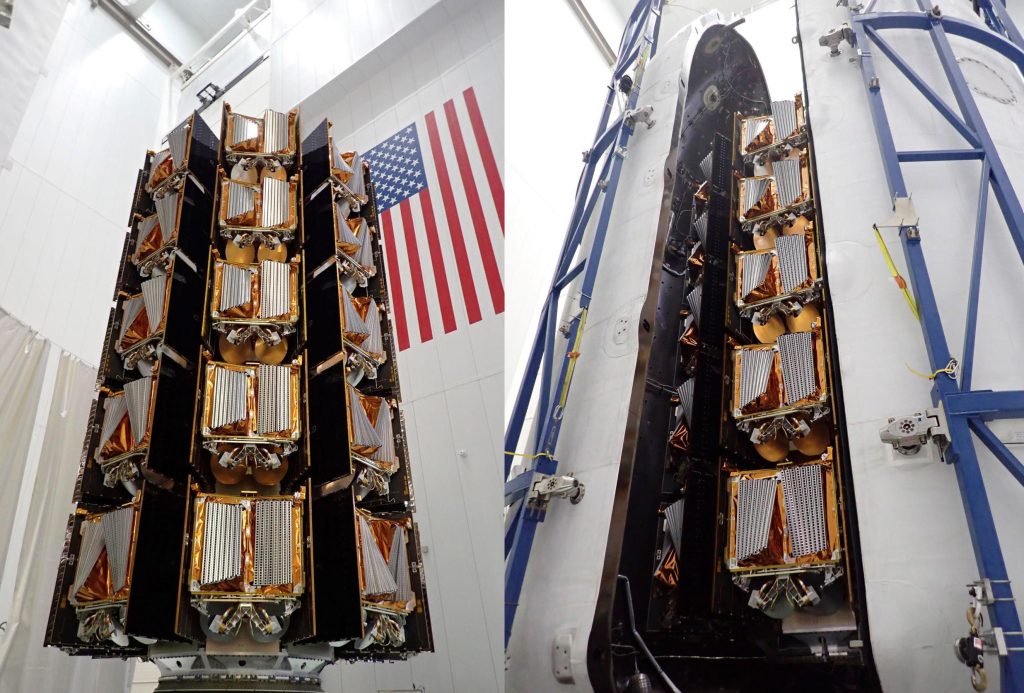

As previously discussed on Teslarati, OneWeb directly competes with SpaceX’s far larger Starlink internet constellation, and refused to engage with the company for launch services – even though Falcon 9 could have likely deployed its satellites more quickly and efficiently – until it was forced to.
“The only reason OneWeb agreed to launch a small subset of its first-generation satellites on SpaceX rockets was a series of egregious actions from Russia that made the pair’s exclusive arrangement too toxic to continue. In June 2015, just 16 months after Russia illegally invaded Ukraine’s Crimea and Donbas regions, OneWeb chose to tie itself at the hip to the unstable aggressor with a firm $1-1.5 billion contract that committed the entirety of its first satellite constellation to 21 Russian Soyuz rockets.
OneWeb nearly escaped consequences from that dubious decision. But in February 2022, Russia doubled down on eight years of small-scale war and Ukrainian occupation with a full-scale, gloves-off invasion with explicit genocidal intent. Europe eventually responded in part with economic sanctions and military supplies that Russia did not appreciate. In response, Russia took a batch of 36 OneWeb satellites hostage, stole the Soyuz rocket OneWeb had already paid for, and killed any possibility of the company completing the six or seven Soyuz launches left under its Arianespace contract. In September 2022, OneWeb announced that it had written off a loss of $229 million as a result of those stolen satellites and rockets.”
Teslarati.com — December 6th, 2022
OneWeb was thus forced to either accept major delays while waiting for European launch options or look elsewhere. OneWeb was able to secure two contracts for India LVM3 rockets, each carrying 36 satellites, but the company chose SpaceX – the only Western launch provider in the world with large amounts of near-term capacity to spare – to launch three batches of 40 satellites.
After its first SpaceX launch, OneWeb should have 500 working satellites in orbit. Another LVM3 launch and two Falcon 9 launches should leave the company with 616 of 648 planned satellites in orbit. It’s unclear how OneWeb intends to launch the 32 remaining satellites.
OneWeb Flight 15 was SpaceX’s 55th successful launch of 2022, leaving the company just five launches away from achieving a 60-launch target set by CEO Elon Musk in March. Following an unintentional 12-day gap between launches caused by several delays, it’s no longer clear if SpaceX can hit that target. SpaceX has never launched later than December 23rd, and it’s extremely unlikely that the company will be able to launch five more times in the next 15 days. Even if it can break through that apparent barrier, it’s also almost impossible to imagine that SpaceX will be able to launch five more times before the end of the year if each mission continues to suffer days or weeks of technical delays.
Originally scheduled to lift off on November 22nd, 29th, 30th, and December 7th, SpaceX’s next mission – carrying a private Japanese Moon lander – is scheduled to launch no earlier than December 11th. After HAKUTO-R, Spaceflight Now reports that SpaceX has another four launches tentatively scheduled this month.
Rewatch SpaceX’s first OneWeb launch here.

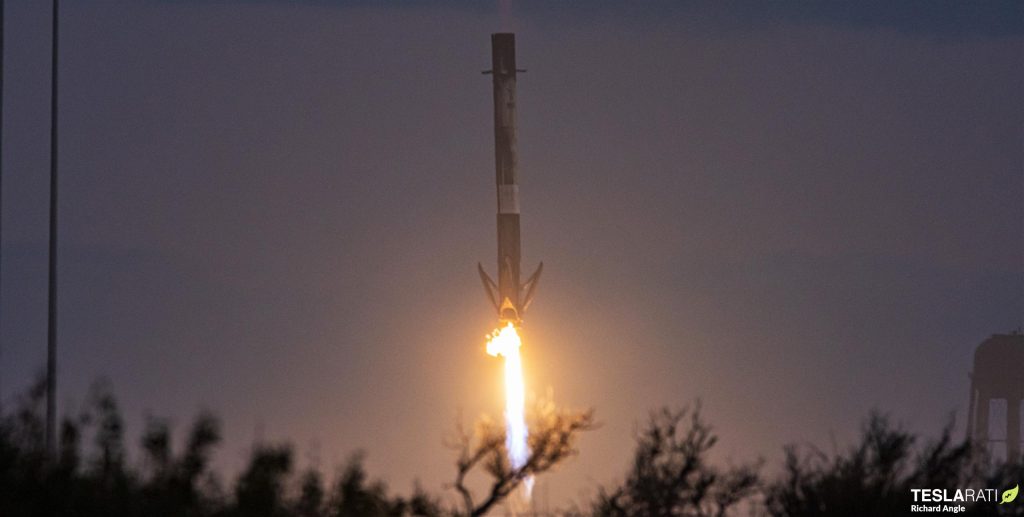
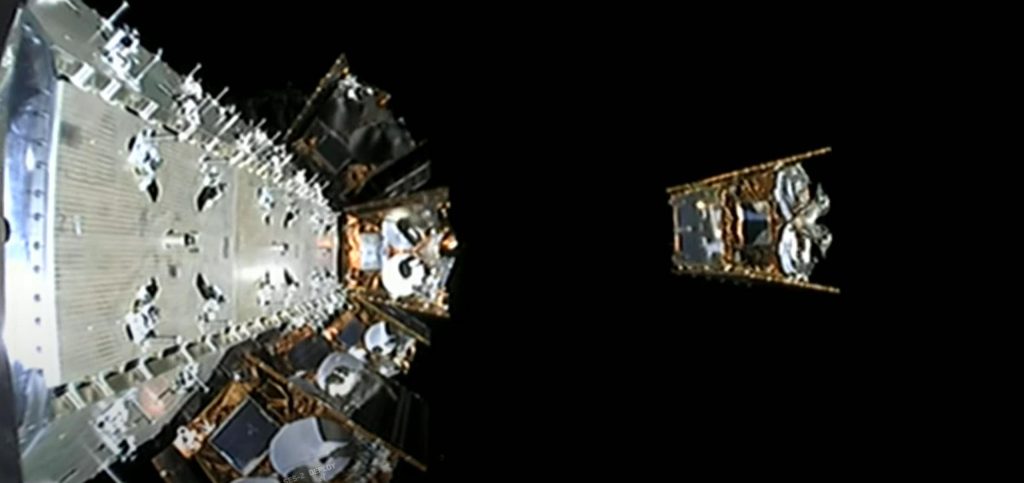
Elon Musk
Tesla investors will be shocked by Jim Cramer’s latest assessment
Jim Cramer is now speaking positively about Tesla, especially in terms of its Robotaxi performance and its perception as a company.

Tesla investors will be shocked by analyst Jim Cramer’s latest assessment of the company.
When it comes to Tesla analysts, many of them are consistent. The bulls usually stay the bulls, and the bears usually stay the bears. The notable analysts on each side are Dan Ives and Adam Jonas for the bulls, and Gordon Johnson for the bears.
Jim Cramer is one analyst who does not necessarily fit this mold. Cramer, who hosts CNBC’s Mad Money, has switched his opinion on Tesla stock (NASDAQ: TSLA) many times.
He has been bullish, like he was when he said the stock was a “sleeping giant” two years ago, and he has been bearish, like he was when he said there was “nothing magnificent” about the company just a few months ago.
Now, he is back to being a bull.
Cramer’s comments were related to two key points: how NVIDIA CEO Jensen Huang describes Tesla after working closely with the Company through their transactions, and how it is not a car company, as well as the recent launch of the Robotaxi fleet.
Jensen Huang’s Tesla Narrative
Cramer says that the narrative on quarterly and annual deliveries is overblown, and those who continue to worry about Tesla’s performance on that metric are misled.
“It’s not a car company,” he said.
He went on to say that people like Huang speak highly of Tesla, and that should be enough to deter any true skepticism:
“I believe what Musk says cause Musk is working with Jensen and Jensen’s telling me what’s happening on the other side is pretty amazing.”
Tesla self-driving development gets huge compliment from NVIDIA CEO
Robotaxi Launch
Many media outlets are being extremely negative regarding the early rollout of Tesla’s Robotaxi platform in Austin, Texas.
There have been a handful of small issues, but nothing significant. Cramer says that humans make mistakes in vehicles too, yet, when Tesla’s test phase of the Robotaxi does it, it’s front page news and needs to be magnified.
He said:
“Look, I mean, drivers make mistakes all the time. Why should we hold Tesla to a standard where there can be no mistakes?”
It’s refreshing to hear Cramer speak logically about the Robotaxi fleet, as Tesla has taken every measure to ensure there are no mishaps. There are safety monitors in the passenger seat, and the area of travel is limited, confined to a small number of people.
Tesla is still improving and hopes to remove teleoperators and safety monitors slowly, as CEO Elon Musk said more freedom could be granted within one or two months.
News
Tesla launches ultra-fast V4 Superchargers in China for the first time
Tesla has V4 Superchargers rolling out in China for the first time.

Tesla already has nearly 12,000 Supercharger piles across mainland China. However, the company just initiated the rollout of the ultra-fast V4 Superchargers in China for the first time, bringing its quick-charging piles to the country for the first time since their launch last year.
The first batch of V4 Superchargers is now officially up and running in China, the company announced in a post on Chinese social media outlet Weibo today.
The company said in the post:
“The first batch of Tesla V4 Superchargers are online. Covering more service areas, high-speed charging is more convenient, and six-layer powerful protection such as rain and waterproof makes charging very safe. Simultaneously open to non-Tesla vehicles, and other brands of vehicles can also be charged. There are more than 70,000 Tesla Superchargers worldwide. The charging network layout covers 100% of the provincial capitals and municipalities in mainland China. More V4 Superchargers will be put into use across the country. Optimize the charging experience and improve energy replenishment efficiency. Tesla will accompany you to the mountains, rivers, lakes, and seas with pure electricity!”
The first V4 Superchargers Tesla installed in China are available in four cities across the country: Shanghai, Zhejiang, Gansu, and Chongqing.

Credit: Tesla China
Tesla has over 70,000 Superchargers worldwide. It is the most expansive and robust EV charging network in the world. It’s the main reason why so many companies have chosen to adopt Tesla’s charging connector in North America and Europe.
In China, some EVs can use Tesla Superchargers as well.
The V4 Supercharger is capable of charging vehicles at speeds of up to 325kW for vehicles in North America. This equates to over 1,000 miles per hour of charging.
Elon Musk
Elon Musk hints at when Tesla could reduce Safety Monitors from Robotaxi
Tesla could be reducing Safety Monitors from Robotaxi within ‘a month or two,’ CEO Elon Musk says.

Elon Musk hinted at when Tesla could begin reducing Safety Monitors from its Robotaxis. Safety Monitors are Tesla employees who sit in the front passenger seat during the driverless rides, and are there to ensure safety for occupants during the earliest rides.
Tesla launched its Robotaxi fleet in Austin last Sunday, and after eight days, videos and reviews from those who have ridden in the driverless vehicles have shown that the suite is safe, accurate, and well coordinated. However, there have been a few hiccups, but nothing that has put anyone’s safety in danger.
A vast majority — close to all of the rides — at least according to those who have ridden in the Robotaxi, have been performed without any real need for human intervention. We reported on what was the first intervention last week, as a Safety Monitor had to step in and stop the vehicle in a strange interaction with a UPS truck.
Watch the first true Tesla Robotaxi intervention by safety monitor
The Tesla and UPS delivery truck were going for the same street parking space, and the Tesla began to turn into it. The UPS driver parallel parked into the spot, which was much smaller than his truck. It seemed to be more of an instance of human error instead of the Robotaxi making the wrong move. This is something that the driverless cars will have to deal with because humans are aggressive and sometimes make moves they should not.
The Safety Monitors have not been too active in the vehicles. After all, we’ve only seen that single instance of an intervention. There was also an issue with the sun, when the Tesla braked abnormally due to the glare, but this was an instance where the car handled the scenario and proceeded normally.
With the Robotaxi fleet operating impressively, some are wondering when Tesla will begin scaling back both the Safety Monitors and Teleoperators that it is using to ensure safety with these early rides.
CEO Elon Musk answered the inquiry by stating, “As soon as we feel it is safe to do so. Probably within a month or two.”
As soon as we feel it is safe to do so.
Probably within a month or two. We continue to improve the Tesla AI with each mile driven.
— Elon Musk (@elonmusk) June 30, 2025
Musk’s response seems to confirm that there will be fewer Teleoperators and Safety Monitors in the coming months, but there will still be some within the fleet to ensure safety. Eventually, that number will get to zero.
Reaching a point where Tesla’s Robotaxi is driverless will be another significant milestone for the company and its path to fully autonomous ride-sharing.
Eventually, Tesla will roll out these capabilities to consumer-owned vehicles, offering them a path to generate revenue as their car operates autonomously and completes rides.
For now, Tesla is focusing on perfecting the area of Austin where it is currently offering driverless rides for just $4.20 to a small group of people.
-

 News5 days ago
News5 days agoTesla Robotaxi’s biggest challenge seems to be this one thing
-

 News2 weeks ago
News2 weeks agoTesla confirms massive hardware change for autonomy improvement
-

 Elon Musk2 weeks ago
Elon Musk2 weeks agoElon Musk slams Bloomberg’s shocking xAI cash burn claims
-

 News2 weeks ago
News2 weeks agoTesla features used to flunk 16-year-old’s driver license test
-

 News2 weeks ago
News2 weeks agoTesla China roars back with highest vehicle registrations this Q2 so far
-

 News2 weeks ago
News2 weeks agoTexas lawmakers urge Tesla to delay Austin robotaxi launch to September
-

 News2 weeks ago
News2 weeks agoTesla dominates Cars.com’s Made in America Index with clean sweep
-

 News2 weeks ago
News2 weeks agoTesla’s Grok integration will be more realistic with this cool feature





















